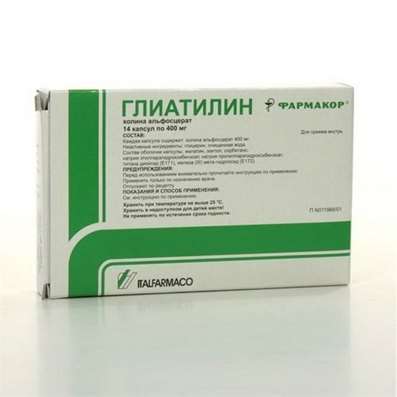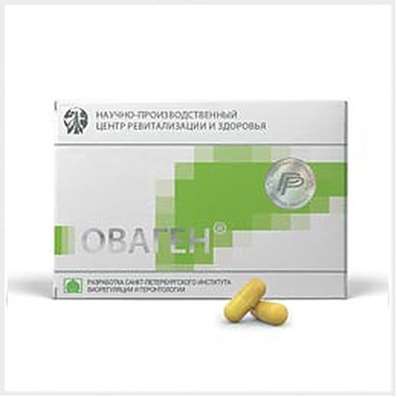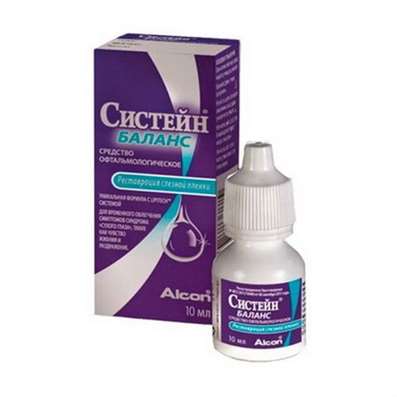Instruction for use: Procaine
I want this, give me price
Latin name: Procainum (genus. Procaini)
Chemical name
2- (Diethylamino) ethyl-4-aminobenzoate (as hydrochloride)
Gross formula
C13H20N2O2
Pharmacological group:
Local Anesthetics
The nosological classification (ICD-10)
I84 Hemorrhoids: Painful hemorrhoidal nodes;External hemorrhoids; Internal hemorrhoids;Inflammation of hemorrhoids; Exacerbation of hemorrhoids; Chronic bleeding hemorrhoids; Acute hemorrhoidal attack
K25 Stomach ulcer: Helicobacter pylori; Pain syndrome with peptic ulcer disease; Pain syndrome with peptic ulcer of stomach and duodenum; Inflammation of the gastric mucosa; Inflammation of the mucous membrane of the gastrointestinal tract; Benign ulcer of the stomach; Disease of the stomach and duodenum, associated with Helicobacter pylori; Exacerbation of gastroduodenitis against ulcer disease; Exacerbation of peptic ulcer; Exacerbation of gastric ulcer; Organic Gastrointestinal Disease; Peptic ulcer of the stomach and duodenum; Postoperative Stomach Ulcer; Recovering ulcers; Symptomatic Stomach Ulcers Symptomatic ulcers of the stomach and duodenum; Chronic inflammatory disease of the upper GI tract associated with Helicobacter pylori; Eradication of Helicobacter pylori; Erotic-ulcerative lesions of the stomach; Erosive lesions of the stomach; Erosion of the gastric mucosa; Peptic Ulcer; Stomach ulcer; Ulcerative lesions of the stomach; Helicobacteriosis
K26 Ulcer of duodenum: Pain syndrome with duodenal ulcer; Pain syndrome with peptic ulcer of stomach and duodenum; Disease of the stomach and duodenum, associated with Helicobacter pylori; Exacerbation of peptic ulcer; Exacerbation of peptic ulcer of the duodenum; Peptic ulcer of the stomach and duodenum; Recurrence of duodenal ulcer; Symptomatic ulcers of the stomach and duodenum; Eradication of Helicobacter pylori; Erotic-ulcerative lesions of the duodenum; Erosion-ulcerative duodenal lesions associated with Helicobacter pylori; Erosive lesions of the duodenum; Peptic ulcer disease of the duodenum; Ulcerative duodenal lesions
L30.9 Dermatitis, unspecified: Allergic dermatoses complicated by a secondary bacterial infection; Anal eczema; Bacterial maturation; Varicose Eczema; Venous dermatitis; Inflammation of the skin; Inflammation of the skin upon contact with plants; Inflammatory Skin Disease; Inflammatory Skin Diseases; Inflammatory skin reactions; Inflammatory processes of the skin; Hypostatic dermatitis; Fungal Eczema; Fungal dermatosis; Dermatitis; Dermatitis is stagnant; Dermatitis and eczema in the anal area; Dermatitis acute contact; Perianal dermatitis; Dermatosis; Dermatosis of the scalp; Dermatosis of psoriasis; Dermatosis with persistent itching; Dermatoses; Dermatoses itchy; Other itching dermatoses; Significant eczematous manifestations; Itching with dermatoses; Itching eczema; Itching dermatoses; Itching dermatitis; Itching dermatosis; True eczema; Skin reaction to insect bites; Skin itching with dermatosis; Constitutional eczema; Weeping eczema; Dermal inflammatory skin disease; Dying Infectious-Inflammatory Skin Disease; Non-allergic dermatitis; Nummular eczema;Acute contact eczema; Acute inflammatory skin disease; Acute dermatosis; Acute severe dermatosis; Perianal dermatitis; Superficial dermatosis; Subacute Contact Eczema; Simple dermatitis; Occupational dermatitis; Psychogenic dermatosis; Bubble dermatitis of newborns; Pustular eruptions; Irritation and redness of the skin; Low-flammable eczema; Dry atrophic eczema; Dry eczema; Toxic dermatitis; Ear eczema like dermatitis; Chronic eczema; Chronic dermatosis; Chronic common dermatosis; Scaly papular dermatosis; Eczema; Eczema anal region; Eczema of the hands; Eczema Contact; Eczema lichenized; Eczema Nummular; Eczema acute; Eczema acute contact; Eczema subacute; Eczematous dermatitis; Eczema-like rashes; Ecome exogenous; Endogenous eczema; Gluteal dermatitis; Restricted itchy dermatitis
R11 Nausea and vomiting: Postoperative vomiting; Nausea; Vomiting; Vomiting in the postoperative period; Vomiting medication; Vomiting in the background of radiation therapy; Vomiting uncontrollable; Vomiting in radiation therapy; Persistent vomiting; Indomitable vomiting; Postoperative nausea; Vomiting with chemotherapy; Vomiting of the central genesis; Vomiting with cytotoxic chemotherapy; Persistent hiccups; Repeated vomiting
R52 Pain, not elsewhere classified: Pain syndrome of radicular origin; Pain syndrome of small and medium intensity of different genesis; Pain syndrome after orthopedic surgery; Pain syndrome in superficial pathological processes; Radicular pain in the background of osteochondrosis of the spine; Radicular pain syndrome; Pleural pain; Chronic pain
Z100.0 * Anesthesiology and premedication: Abdominal surgery; Adenomectomy; Amputation; Angioplasty of the coronary arteries; Carotid artery angioplasty; Antiseptic treatment of skin in wounds; Antiseptic treatment of hands; Appendectomy; Atheroctomy; Balloon coronary angioplasty; Vaginal hysterectomy; Venous bypass; Interventions on the vagina and cervix; Interventions on the bladder; Interference in the oral cavity; Reconstructive-reconstructive operations; Hand hygiene of medical personnel; Gynecological Surgery; Gynecological interventions; Gynecological operations; Hypovolemic shock during surgery; Disinfection of purulent wounds; Disinfection of the edges of wounds; Diagnostic Interventions; Diagnostic procedures; Diathermocoagulation of the cervix; Long-term surgeries; Replacement of fistulous catheters; Infection in orthopedic surgical interventions; Artificial heart valve; Kistectomy; Short-term outpatient surgery; Short-term operations; Short-term surgical procedures; Cryotyreotomy; Blood loss during surgical interventions; Bleeding during surgery and in the postoperative period; Kuldotsentez; Laser coagulation; Laserocoagulation; Laser retinopathy of the retina; Laparoscopy; Laparoscopy in gynecology; Likvornaya fistula; Small gynecological operations; Small surgical interventions; Mastectomy and subsequent plastic surgery; Mediastinotomy; Microsurgical operations on the ear; Mukinging operations; Suturing; Minor surgery; Neurosurgical operation; Eclipse of the eyeball in ophthalmic surgery Orchiectomy; Pancreatectomy; Pericardectomy; The rehabilitation period after surgical operations; Reconvalence after surgical intervention; Percutaneous transluminal coronary angioplasty; Pleural Thoracocentesis; Pneumonia postoperative and post traumatic; Preparing for surgical procedures; Preparing for a surgical operation; Preparation of the surgeon's arms before surgery; Preparation of the colon for surgical interventions; Postoperative aspiration pneumonia in neurosurgical and thoracic operations; Postoperative nausea; Postoperative hemorrhage; Postoperative granuloma; Postoperative shock; Early postoperative period; Myocardial revascularization; Resection of the apex of the tooth root; Resection of the stomach; Bowel resection; Resection of the uterus; Liver resection; Small bowel resection; Resection of a part of the stomach; Reocclusion of the operated vessel; Gluing of tissues during surgical interventions; Suture removal; Condition after eye surgery; Condition after surgery; Condition after surgery in the nasal cavity;Condition after gastrectomy; Condition after resection of the small intestine; Condition after tonsillectomy; Condition after removal of duodenum; Condition after phlebectomy; Vascular Surgery; Splenectomy; Sterilization of surgical instrument; Sterilization of surgical instruments; Sternotomy; Dental surgery; Dental intervention on periodontal tissues; Strumectomy; Tonsillectomy; Thoracic surgery; Total gastrectomy; Transdermal intravascular coronary angioplasty; Transurethral resection; Turbinectomy; Removal of a tooth; Cataract removal; Removing Cysts; Removal of tonsils; Removal of myoma; Removal of mobile milk teeth; Removal of polyps; Removal of a broken tooth; Removal of the uterus; Removal of seams; Urethrotomy; Fistula of the luminal ducts; Frontoetmoidohaimorotomy; Surgical infection; Surgical treatment of chronic ulcers of extremities; Surgery; Surgery in the anus; Surgery on the large intestine; Surgical practice; Surgical procedure; Surgical interventions; Surgical interventions on the digestive tract; Surgical interventions on the urinary tract;Surgical interventions on the urinary system; Surgical interventions on the genitourinary system; Surgical intervention on the heart; Surgical procedures; Surgical operations; Surgical operations on veins; Surgical intervention; Vascular; Cholecystectomy; Partial resection of the stomach; Extraperitoneal hysterectomy; Percutaneous transluminal coronary angioplasty; Percutaneous transluminal angioplasty; Coronary artery bypass grafting; Extirpation of the tooth; Extirpation of infant teeth; Extirpation of pulp; Extracorporeal circulation; Extraction of the tooth; Extraction of teeth; Extraction of cataracts; Electrocoagulation; Endourological interventions; Episiotomy; Ethmoidotomy; Complications after tooth extraction
CAS code
59-46-1
Characteristics of the substance Procaine
Colorless crystals or white crystalline powder odorless. Very easily soluble in water, easily soluble in alcohol.
Pharmacology
Pharmacological action - local anesthetic.
It disrupts generation and conduction of nerve impulses mainly in non-mielin fibers. Being a weak base, it interacts with the receptors of membrane sodium channels, blocks the current of sodium ions, displaces calcium from receptors located on the inner surface of the membrane. Changes the action potential in the membranes of nerve cells without a pronounced effect on the resting potential. Antiarrhythmic action is associated with an increase in the effective refractory period, a decrease in excitability and automatism of the myocardium.
Poorly absorbed through mucous membranes. When parenteral administration is well absorbed, rapidly hydrolyzed in the bloodstream under the action of esterases and cholinesterases of blood plasma to para-aminobenzoic acid and diethylaminoethanol. T1 / 2 is 0.7 minutes, 80% of the drug is excreted in the urine.
When absorbed or directly injected into the blood reduces the formation of acetylcholine and the excitability of cholinergic systems, has a ganglion-blocking effect, reduces spasm of smooth muscles, inhibits the excitability of the myocardium and motor cortical areas of the brain. Has analgesic and antishock activity, antihypertensive and antiarrhythmic action. Eliminates the descending inhibitory effects of the reticular formation of the brain stem. Oppresses polysynaptic reflexes. In large doses can cause seizures. Has a short anesthetic activity (the duration of infiltration anesthesia is 0.5-1 h). To reduce the systemic effect, toxicity and prolongation of the effect is used in combination with vasoconstrictors (adrenaline). With increasing concentration of solutions, the total dose should be reduced. To prevent the development of hypersensitivity reactions, therapy begins with the administration of 2 ml of a 2% solution, after 3 days (in the absence of side effects) - 3 ml, and then go to the full dose - 5 ml per injection. Effective (with / m introduction) in elderly patients in the early stages of diseases associated with functional disorders of the central nervous system (hypertension, spasms of the coronary vessels and vessels of the brain, etc.).
Application of the substance Procaine
Local anesthesia: infiltration, conduction, epidural and spinal cord; vagosympathetic and paranephalic blockade; potentiation of anesthesia during general anesthesia; pain syndrome of different genesis (including with peptic ulcer of the stomach and duodenum); spasms of blood vessels, neurodermatitis, hemorrhoids, nausea.
Contraindications
Hypersensitivity.
Side effects of Procaine
Dizziness, weakness, arterial hypotension, allergic reactions (anaphylactic shock is possible).
Interaction
Enhances the effect of anesthesia.
Overdose
When used in high doses, it is possible to have excessive absorption, accompanied by nausea, vomiting, sudden cardiovascular collapse, increased nervous excitability, tremor and convulsions, respiratory depression.
Treatment: general resuscitation measures. In case of intoxication after injection into the muscles of the arm or leg, urgent application of the tourniquet is recommended to reduce the further receipt of the drug in the total blood flow.
Routes of administration
Inside, SC, IM, IV, by electrophoresis, rectally.
Special instructions
It is not absorbed from the mucous membranes; does not provide surface anesthesia. Use together with 0.1% solution of epinephrine hydrochloride at the rate of 1 drop for 2-5 ml of the procaine solution.

 Cart
Cart





